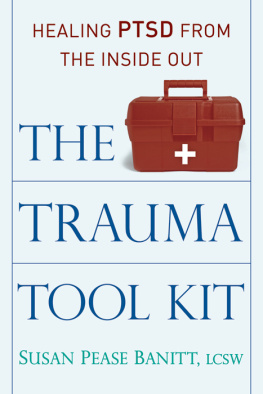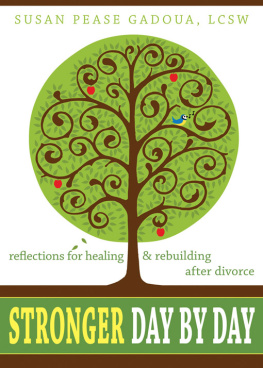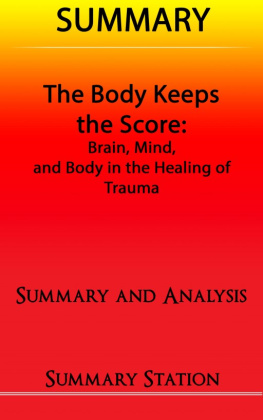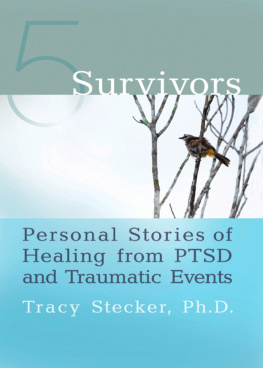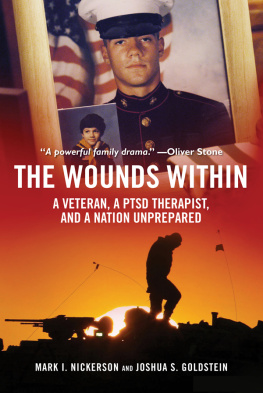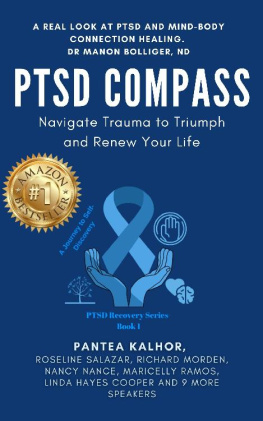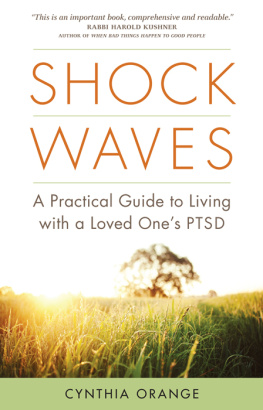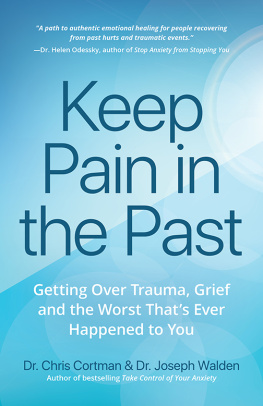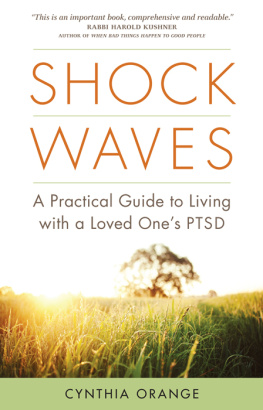THE
TRAUMA
TOOL KIT
THE
TRAUMA
TOOL KIT
HEALING PTSD FROM THE INSIDE OUT
Susan Pease Banitt, LCSW

Learn more about Susan Pease Banitt and her work at www.insightouthealing.com and www.insightouthealing.com/blog/1/
Find more books like this at www.questbooks.net
Copyright 2012 by Susan Pease Banitt
First Quest Edition 2012
All rights reserved. Without limiting the rights under copyright reserved above, no part of this publication may be reproduced, stored in or introduced into a retrieval system, or transmitted, in any form, or by any means (electronic, mechanical, photocopying, recording, or otherwise), without the prior written permission of the publisher of this book.
The scanning, uploading, and distribution of this book via the Internet or via any other means without the permission of the publisher is illegal and punishable by law. Please purchase only authorized electronic editions, and do not participate in or encourage electronic piracy of copyrighted materials.
While the author has made every effort to provide accurate telephone numbers and Internet addresses at the time of publication, neither the publisher nor the author assumes any responsibility for errors or for changes that occur after publication. Further, the publisher does not have any control over and does not assume any responsibility for author or third-party websites or their content.
For additional information, write to
Quest Books
Theosophical Publishing House
P. O. Box 270
Wheaton, IL 60187-0270
www.questbooks.net
The author and publisher specifically disclaim all responsibility for any liability, loss or risk, personal or otherwise, that happens via a consequence, directly or indirectly, of the use and application of any of the contents of this book. The ideas, procedures, and suggestions in the book are not a substitute for consultation with a medical or mental health professional.
Cover design by Mary Ann Smith
Library of Congress Cataloging-in-Publication Data
Pease Banitt, Susan.
The trauma tool kit: healing PTSD from the inside out / Susan Pease Banitt.1st. Quest ed.
p. cm.
Includes bibliographical references.
ISBN 978-0-8356-0896-1
1. Mind and body therapies. 2. Post-traumatic stress disorderAlternative treatment. I. Title.
RC489.M53P435 2012
616.8521dc23 2011041574
ISBN for electronic edition, e-pub format: 978-0-8356-2062-8
5 4 3 2 1 * 12 13 14 15 16
This book is gratefully dedicated to two pioneers whose loving and wise courage in the medium of television has facilitated the healing of millions. Phil Donahue and Oprah Winfrey brought the reality of domestic violence and child abuse front and center in American consciousness, despite risk to themselves and their careers, by making public what clinicians were just beginning to understandthat vast numbers of people suffer from traumatic stress. Without their work, it is unlikely I would have ever healed enough to write this book. Thank you, from the bottom of my heart.
What to Do in Case of an Emergency
I F YOU ARE CURRENTLY experiencing any kind of psychological or spiritual crisis, whether it be related to suicidal or homicidal thoughts, alcohol or other substance use, sexual abuse, domestic violence, high anxiety, or any other intense traumatic feelings, please stop reading and take immediate steps to care for yourself.
Call 9l l, your therapist, or a local hotline that fits your situation. Hotlines are usually listed in the yellow pages; or, if you have internet access, you can easily find them in your area with a quick search on Google.
Preface
I N THE CURRENT state of the art of Western medicine, stress is a subjective event. We cannot peer into the psyche of a human being the way a cardiologist can examine the stresses on a heart by injecting dyes and looking at vascular function. We cannot predict the effect of a traumatic event on a person the way we can predict the effect of a gunshot on tissue. Yet, stress and psychological trauma profoundly affect the health of the human body as well as the mental, social, and spiritual functioning of the human being. Until recently, treatments of post-traumatic stress disorder (PTSD) and stress-related disorders have been woefully inadequate and poorly understood. I know this from the inside out, both as someone who has provided services over the past thirty-five years for those with traumatic stress and as someone who has suffered from it herself.
When I trained as a psychotherapist in the Harvard medical system in the 1980s, I was blessed to have some of the best teachers and supervisors in the fields of social work and psychotherapy. Dr. Sigmund Freuds granddaughter, Sophie Freud, Ph.D., taught at Simmons School of Social Work. She was brilliant, open-minded, and unconventional, teaching her students not to rest on their laurels but to forge ahead theoretically, always incorporating new knowledge. Well-known psychoanalysts trained all of my supervisors. I, like almost every other student of therapy in Boston, was engaged in my own psychodynamic psychotherapy with a highly trained and qualified therapist. The people I trained under and worked with were profoundly compassionate healers with a great deal of knowledge. Their interest and study, however, was confined, for the most part, to the psyche or mind. Other parts of the human organism, such as the body, were not given a great deal of attention, much less more esoteric ideas such as the yogic energy concept of prana or the Chinese medicine correlate of qi. Traditional therapists largely left the concept of a spiritual self untouched, considering it the purview of religion.
At the same time interest in yoga was burgeoning, greatly enhanced by two facilities on the East Coast: the Kripalu Center, a yogic ashram turned training center, and the cutting-edge Omega Institute for Holistic Studies, cofounded by Elizabeth Lesser, author of the recently popular book Broken Open: How Difficult Times Can Help Us Grow. These centers focus on deeper and broader aspects of human nature, guided by the philosophy that healing is holistic in essence. They draw heavily on Eastern spirituality and philosophy for their workshops. I, along with tens of thousands of healers, attended courses at these and other facilities each year. We went to broaden our understanding of healing and, more importantly, to seek our own. Inevitably, what we learned at these holistic workshops seeped into our clinical practices up and down the East Coast, creating a surprisingly progressive atmosphere among the bastions of traditional psychotherapy.
David Eisenberg, MD, convened the first complementary therapies committee at Beth Israel Hospital in Boston in the early 1990s and began investigating mind-body medicine, following up on Dr. Herbert Bensons pioneering 1970s work on the connection between stress and disease in the human body. As an intern with a known interest in alternative medicine, I was thrilled to be invited to attend these early committee meetings. The surprisingly broadminded approach to medicine in the Harvard medical system left an indelible progressive mark on my work. Dr. Eisenberg went on to do research with the National Institutes of Health, conducting the 1993 landmark research survey that shocked the medical community, showing that US citizens were spending billions of dollars of their own money for alternative therapies treating a variety of medical conditions. Why, the experts wondered? The medical community was dumbfounded. The psychological community was skeptical but intrigued. Clearly there was a disconnect between what providers thought was helpful and what patients experienced as healing.
Next page
